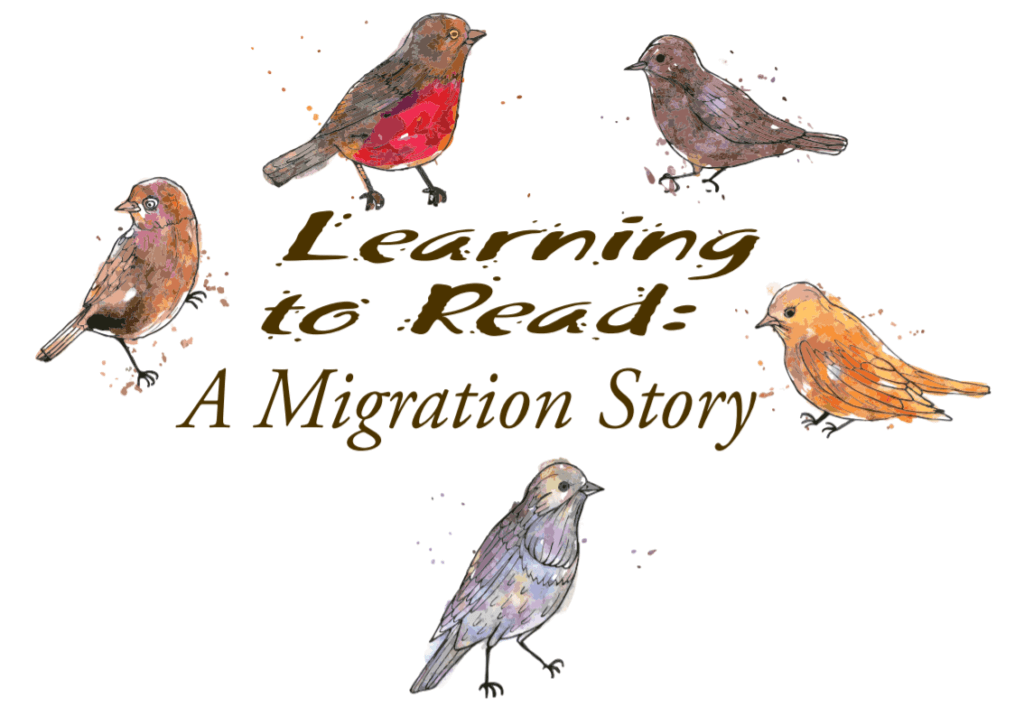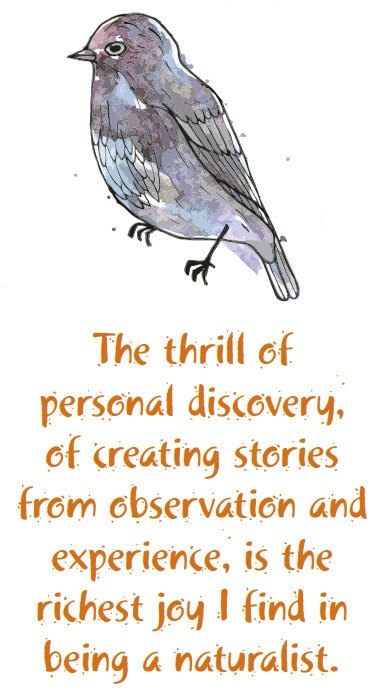 by Brian Williams
by Brian Williams
One February afternoon in Missoula’s North Hills, I walked into a big flock of robins. They moved through the sere grass in abrupt, unsynchronized movements, like actors in a silent movie—three steps, head cock; three steps, head cock—each in its own direction.
My blood quickened. Here was something unexpected; a large flock of robins, at the end of winter, in prairie habitat. The naturalist in me lives for these novel encounters, when observation lifts a veil on a new story. I watched more closely.
The disjointed marching was regularly broken when a robin stabbed at the freshly thawed ground. I bent down to see what the robins hunted, but could find nothing on top of the thick mud. I didn’t realize the full extent of the flock until a group of about 50 birds lifted up in the wind and were swept to another hillside. The original flock was only diminished by about a quarter.
While robins overwinter in the Missoula valley, they do so in small numbers. Most years there are fewer than 50 total individuals reported on the Missoula Christmas Bird Count, an annual winter bird census. Clearly these weren’t the usual winter residents. And while robins can seem ubiquitous in summer, they are spread more evenly across the landscape and confined to habitats that have at least a few trees for nesting.
The unusual combination of elements pointed to one conclusion—this was a migrating flock of birds. They were my first sign of spring that year, a memorable marker of the turning seasons. The hunt for those moments when observations weave into prior experience to create a new story inspires my naturalist growth. It was my previous experiences watching and studying birds that framed this moment as unusual and, consequently, infused it with magic. The thrill of personal discovery, of creating stories from observation and experience, is the richest joy I find in being a naturalist.
 And that thrill never ends. Just as my prior bird study created the opportunity to recognize the flock of robins as a sign of migration, the experience itself became the foundation for more discovery. A few years after my first encounter with late winter robins, I was out walking the North Hills in February again, specifically looking for the robins. I found them, but this time spread in many smaller groups throughout the North Hills, flushing as I walked close. Once, instead of flushing a little flock of robins, I flushed a raptor with prey in its talons. When it lit on a fence post I could see through my binoculars that it was a Peregrine Falcon, pinning a limp robin down between its talons! I was not the only one out looking for robins that day.
And that thrill never ends. Just as my prior bird study created the opportunity to recognize the flock of robins as a sign of migration, the experience itself became the foundation for more discovery. A few years after my first encounter with late winter robins, I was out walking the North Hills in February again, specifically looking for the robins. I found them, but this time spread in many smaller groups throughout the North Hills, flushing as I walked close. Once, instead of flushing a little flock of robins, I flushed a raptor with prey in its talons. When it lit on a fence post I could see through my binoculars that it was a Peregrine Falcon, pinning a limp robin down between its talons! I was not the only one out looking for robins that day.
In time, I built even more stories, more personal connections to spring migration: Song Sparrows suddenly singing in evenly spaced intervals along the Clark Fork River during my pre-dawn runs in the middle of February; the fluting ring of meadowlark song in the first week of March; the week in early June when brilliant Western Tanagers flit in hundreds of fruit trees across Missoula yards. The richness of each experience was proportional to background that prepared me for it, and each encounter prepared me to ask better questions and experience migration in richer ways.
Indeed, some of the most memorable moments of my naturalist career have come when, for a short time, the migration of birds became visceral: lying on my back near Corpus Christi, Texas, watching thousands of Broad-winged Hawks stream overhead; running into a flock of a hundred bluebirds in the Blackfoot Valley prairie, grounded on their flight north by a spring storm; sitting in a grove of live oak trees in south Texas, listening to the quiet snap of warbler beaks all around as they refueled on insects after a flight across the Gulf of Mexico. In those moments, I’ve felt caught up in, in contact with, a big, powerful force of the natural world. And when the experience passed, I had a new understanding, a new story of how the world works.
Once in a while, I find that the haphazard accumulation of experiences suddenly align into a larger meta-story that opens up a brand new perspective on the world. I remember the power of suddenly reversing my perspective on migration—perhaps the evolution of migration was successful not because it let birds avoid the harsh winter but because it let them exploit the temporarily rich resources of temperate and arctic summers. I’d always thought of migration as a winter survival mechanism, but perhaps it’s a summer survival mechanism to avoid intense competition for resources in the tropics?
Suddenly, instead of marveling at how an adult Calliope Hummingbird can return to the same nest site each year, I began wondering how a first-year Calliope can navigate to a winter home that it has never seen before. Instead of admiring year-round residents like chickadees and Golden-crowned Kinglets for toughing out the winter, I began admiring them for sticking out the summer when they must compete for resources with many more species.
The idea is not one new to the world. Nor is it necessarily true. Even if the language we commonly use unconsciously supports the conception of migration as a strategy for coping with winter, science clearly recognizes that migration is beneficial both to avoid winter and exploit seasonal resources. However, the idea, the story, is mine because I came to it through first-hand observation.
Now, when fall arrives and I watch a kettle of hawks circling over a patch of sun-warmed ground, I think of them as heading home rather than leaving. When the warblers and flycatchers and thrushes show up in their migration haunts, I wonder how many are making their first trip to an unseen home. In November I look forward to the birds who will come home to Montana for the winter—Northern Shrikes, Rough-legged Hawks, Snow Buntings.
In this story of migration, autumn is the season of homecoming. The story isn’t important to science or even to the layperson especially. It is important because of the time I spent learning to decode it—time with binoculars and mentors and field guides in rain, sun, snow, ice, heat, and humidity. It is important because I created meaning from experience and observation. It is important because it is one I read myself.
—Brian Williams was a professional naturalist for 10 years, guiding bird-watching tours in south Texas and working for the Montana Natural History Center. He’s since migrated to a new career as a fourth-grade teacher in Missoula.
This article was originally published in the Fall 2015 issue of Montana Naturalist magazine, and may not be reproduced in part or in whole without the written consent of the Montana Natural History Center. ©2015 The Montana Natural History Center.
Click here to read more articles from Montana Naturalist magazine.
Want to learn more about our programs? Sign up for our e-newsletter! You can also become a member and get discounts on our programs as well as free reciprocal admission to 300+ science centers in North America!












